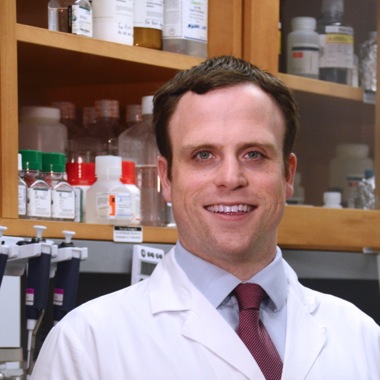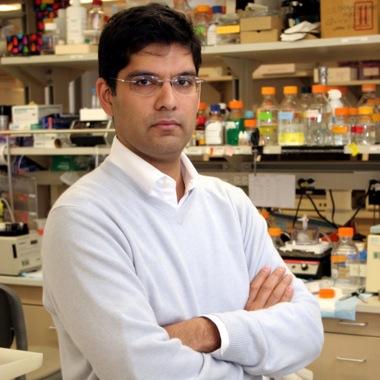








Working on the Coronavirus
While many scientists have had to shutter their labs during this worldwide pandemic, a handful from the Vallee community have been ramping up their work and hope to address some critical challenges presented by the novel coronavirus. Read below to learn about two new tests being developed to identify infection, two projects to track the spread of the virus, and two projects that shed light on the basic science.
Feng Zhang (Vallee Scholar 2013) and his colleagues at the McGovern Institute for Brain Research at MIT, the Broad Institute of MIT and Harvard University, the Ragon Institute, and HHMI, have been working on a coronavirus-detection test that uses CRISPR gene-editing technology to detect the genetic signature of the virus. STOPCovid, which will be marketed by Sherlock Bio-Sciences Inc, has recently been granted emergency use by the FDA, which allows only “high-complexity” laboratories to use the test kit for now. The inventors are developing a simplified version they hope will be approved for point-of-care or in-home use. Read more in the MIT News and the Washington Post.
To respond to the spread of the new coronavirus, public health authorities need to know who’s getting sick. Now, a new app called How We Feel, also developed by Feng Zhang and a colleague at the University of Pennsylvania, Ophir Shalem, asks users to check in daily to answer a handful of questions about how they feel, any symptoms, their household, and their behavior. This data is aggregated and then shared with researchers and public health agencies. Each submission is linked to a zip code, but no other identifying information is collected. With this geographic information, public health agencies can track the pandemic locally. Read more...
Another scientist who hasn't been getting much sleep lately is Chris Mason (Vallee Scholar 2014) from Weil Cornell Medicine. Chris has also been working on a faster way to test for SARS-CoV-2, this time by using LAMP or loop-mediated isothermal amplification. The low-cost technique, which is performed in a single tube at a constant temperature, amplifies DNA quickly—with high specificity and efficiency. The Mason lab is developing a LAMP-based colorimetric test that can identify the presence of SARS-CoV-2 from both oral and nasopharyngeal samples. See LAMP Lights Up COVID-19 Testing.
They are also swabbing the subway again. Chris Mason and a team of scientists from all over the world have swabbed public areas – metro stations, detention centres, hospitals – in 25 countries to see if and where the coronavirus is residing. The data is all made available via a rapid, international COVID-10 and microbial monitoring network before formal peer review begins. He talks about this research here and you can read more about it in Wired and on Science Business.
A number of COVID-19 patients have reported a loss of their sense of smell (anosmia) which triggered Sandeep Robert (Bob) Datta (Vallee Scholar 2014) and his colleagues at Harvard Medical School to look more closely at this issue. They found that certain cells in the nose express genes that facilitate COVID-19 infection. Their work also suggests that olfactory neurons, the cells that directly sense smell, do not express genes that would allow them to be infected by the virus. The findings are published on the preprint server bioRxiv, a free repository for research preceding peer review. Read more in the Harvard Crimson, Neurology Today, and Bloomberg News.
When someone becomes infected with SARS-CoV-2, the pathogen proliferates rapidly in the cells of the infected person. To do so, the virus has to multiply its genetic material, which consists of a single long RNA strand. This task is performed by the viral “copy machine”, the polymerase. Researchers led by Patrick Cramer (Vallee Visiting Professor 2012) at the Max Planck Institute for Biophysical Chemistry in Göttingen, Germany, have now determined the 3D structure of the corona polymerase. This makes it possible to investigate how antiviral drugs such as remdesivir – which blocks the polymerase – work, and to search for new inhibitory substances. Read more...
As we hear of new research being undertaken by scientists in the Vallee community, we will add it to our website.